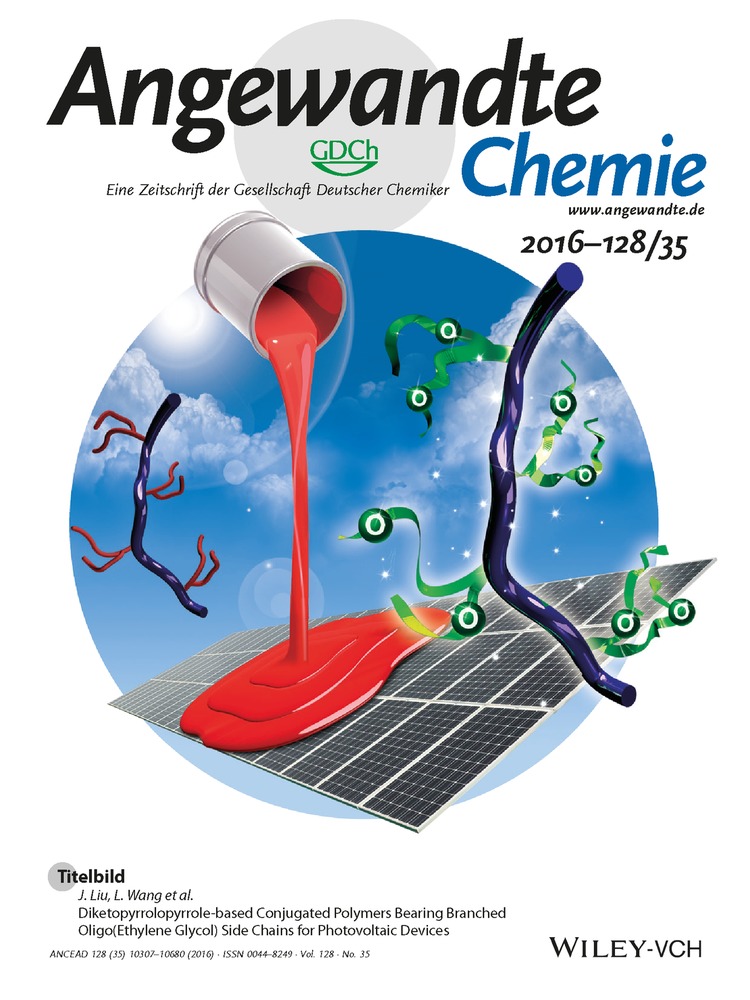Unraveling the Thermodynamics of the Folding and Interconversion of Human Telomere G-Quadruplexes
Dr. Matjaž Bončina
Faculty of Chemistry and Chemical Technology, University of Ljubljana, Večna pot 113, Ljubljana, Slovenia
Search for more papers by this authorProf. Dr. Gorazd Vesnaver
Faculty of Chemistry and Chemical Technology, University of Ljubljana, Večna pot 113, Ljubljana, Slovenia
Search for more papers by this authorCorresponding Author
Prof. Dr. Jonathan Brad Chaires
James Graham Brown Cancer Center, University of Louisville, 505 S. Hancock St., Louisville, KY, 40202 USA
Search for more papers by this authorCorresponding Author
Prof. Dr. Jurij Lah
Faculty of Chemistry and Chemical Technology, University of Ljubljana, Večna pot 113, Ljubljana, Slovenia
Search for more papers by this authorDr. Matjaž Bončina
Faculty of Chemistry and Chemical Technology, University of Ljubljana, Večna pot 113, Ljubljana, Slovenia
Search for more papers by this authorProf. Dr. Gorazd Vesnaver
Faculty of Chemistry and Chemical Technology, University of Ljubljana, Večna pot 113, Ljubljana, Slovenia
Search for more papers by this authorCorresponding Author
Prof. Dr. Jonathan Brad Chaires
James Graham Brown Cancer Center, University of Louisville, 505 S. Hancock St., Louisville, KY, 40202 USA
Search for more papers by this authorCorresponding Author
Prof. Dr. Jurij Lah
Faculty of Chemistry and Chemical Technology, University of Ljubljana, Večna pot 113, Ljubljana, Slovenia
Search for more papers by this authorAbstract
Why human telomere DNA fragments fold into different G-quadruplex structures with parallel, hybrid, and antiparallel strand orientations depending on the temperature and concentration of co-solutes remains poorly understood. Similarly, the formation of intermediate structures along the folding or interconversion pathways is not well understood. Herein, we address these questions by introducing a conceptual framework, based on the global thermodynamic analysis of DSC and CD spectroscopy data, which led to a detailed description of the topological phase space (phase diagram) of the stability of the human telomere fragment 5′-AGGG(TTAGGG)3-3′ (Tel22). This framework clarifies the driving forces of quadruplex folding and interconversion processes over a wide range of temperatures and ion (K+, Na+) and polyethylene glycol (PEG) concentrations and demonstrates their linkage to the human telomere DNA structural features.
Supporting Information
As a service to our authors and readers, this journal provides supporting information supplied by the authors. Such materials are peer reviewed and may be re-organized for online delivery, but are not copy-edited or typeset. Technical support issues arising from supporting information (other than missing files) should be addressed to the authors.
| Filename | Description |
|---|---|
| ange201605350-sup-0001-misc_information.pdf862.3 KB | Supplementary |
Please note: The publisher is not responsible for the content or functionality of any supporting information supplied by the authors. Any queries (other than missing content) should be directed to the corresponding author for the article.
References
- 1
- 1aR. D. Gray, R. Buscaglia, J. B. Chaires, J. Am. Chem. Soc. 2012, 134, 16834–16844;
- 1bR. Buscaglia, R. D. Gray, J. B. Chaires, Biopolymers 2013, 99, 1006–1018;
- 1cP. Stadlbauer, L. Trantírek, T. E. Cheatham III, J. Koča, J. Šponer, Biochimie 2014, 105, 22–35;
- 1dA. Rajendran, M. Endo, K. Hidaka, H. Sugiyama, Angew. Chem. Int. Ed. 2014, 53, 4107–4112; Angew. Chem. 2014, 126, 4191–4196;
- 1eW. Li, X. M. Hou, P. Y. Wang, X. G. Xi, M. Li, J. Am. Chem. Soc. 2013, 135, 6423–6426.
- 2
- 2aI. Bessi, H. R. A. Jonker, C. Richter, H. Schwalbe, Angew. Chem. Int. Ed. 2015, 54, 8444–8448; Angew. Chem. 2015, 127, 8564–8568;
- 2bA. Y. Q. Zhang, S. Balasubramanian, J. Am. Chem. Soc. 2012, 134, 19297–19308;
- 2cR. D. Gray, J. B. Chaires, Nucleic Acids Res. 2008, 36, 4191–4203;
- 2dM. W. da Silva, Chem. Eur. J. 2007, 13, 9738–9745;
- 2eE. Largy, A. Marchand, S. Amrane, V. Gabelica, J. L. Mergny, J. Am. Chem. Soc. 2016, 138, 2780–2792;
- 2fS. Čeru, P. Šket, I. Prislan, J. Lah, J. Plavec, Angew. Chem. Int. Ed. 2014, 53, 4881–4884; Angew. Chem. 2014, 126, 4981–4984.
- 3Y. Wang, D. J. Patel, Structure 1993, 1, 263–282.
- 4A. Ambrus, D. Chen, J. Dai, T. Bialis, R. A. Jones, D. Yang, Nucleic Acids Res. 2006, 34, 2723–2735.
- 5
- 5aG. N. Parkinson, M. P. H. Lee, S. Neidle, Nature 2002, 417, 876–880;
- 5bY. Xue, J. Liu, K. Zheng, Z. Kan, Y. Hao, Z. Tan, Angew. Chem. Int. Ed. 2011, 50, 8046–8050; Angew. Chem. 2011, 123, 8196–8200;
- 5cB. Heddi, A. T. Phan, J. Am. Chem. Soc. 2011, 133, 9824–9833;
- 5dM. C. Miller, R. Buscaglia, J. B. Chaires, A. N. Lane, J. O. Trent, J. Am. Chem. Soc. 2010, 132, 17105–17107;
- 5eR. Buscaglia, M. C. Miller, W. L. Dean, R. D. Gray, A. N. Lane, J. O. Trent, J. B. Chaires, Nucleic Acids Res. 2013, 41, 7934–7946.
- 6
- 6aM. Bončina, J. Lah, I. Prislan, G. Vesnaver, J. Am. Chem. Soc. 2012, 134, 9657–9663;
- 6bM. Bončina, F. Hamon, B. Islam, M. P. Teulade-Fichou, G. Vesnaver, S. Haider, J. Lah, Biophys. J. 2015, 108, 2903–2911.
- 7B. Pagano, A. Randazzo, I. Fotticchia, E. Novellino, L. Petraccone, C. Giancola, Methods 2013, 64, 43–51.
- 8A. I. Karsisiotis, N. M. Hessari, E. Novellino, G. P. Spada, A. Randazzo, M. Webba da Silva, Angew. Chem. Int. Ed. 2011, 50, 10645–10648; Angew. Chem. 2011, 123, 10833–10836.
- 9
- 9aN. V. Hud, F. W. Smith, F. A. L. Anet, J. Feigon, Biochemistry 1996, 35, 15383–15390;
- 9bE. Largy, J.-L. Mergny, V. Gabelica, Met. Ions Life Sci. 2016, 16, 203–258.
- 10D. Miyoshi, A. Nakao, N. Sugimoto, Biochemistry 2002, 41, 15017–15024.
- 11C. M. Olsen, L. A. Marky, J. Phys. Chem. B 2009, 113, 9–11.
- 12A. Arora, S. Maiti, J. Phys. Chem. B 2009, 113, 10515–10520.
- 13R. L. Baldwin, Proc. Natl. Acad. Sci. USA 1986, 83, 8069–8072.
Citing Literature
This is the
German version
of Angewandte Chemie.
Note for articles published since 1962:
Do not cite this version alone.
Take me to the International Edition version with citable page numbers, DOI, and citation export.
We apologize for the inconvenience.




